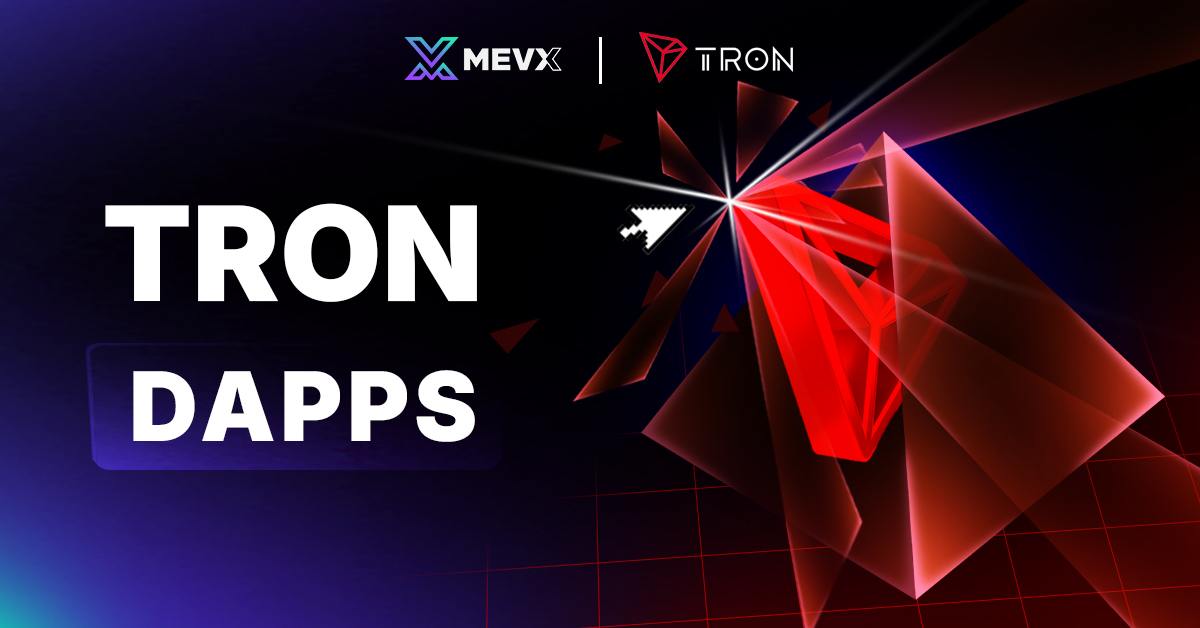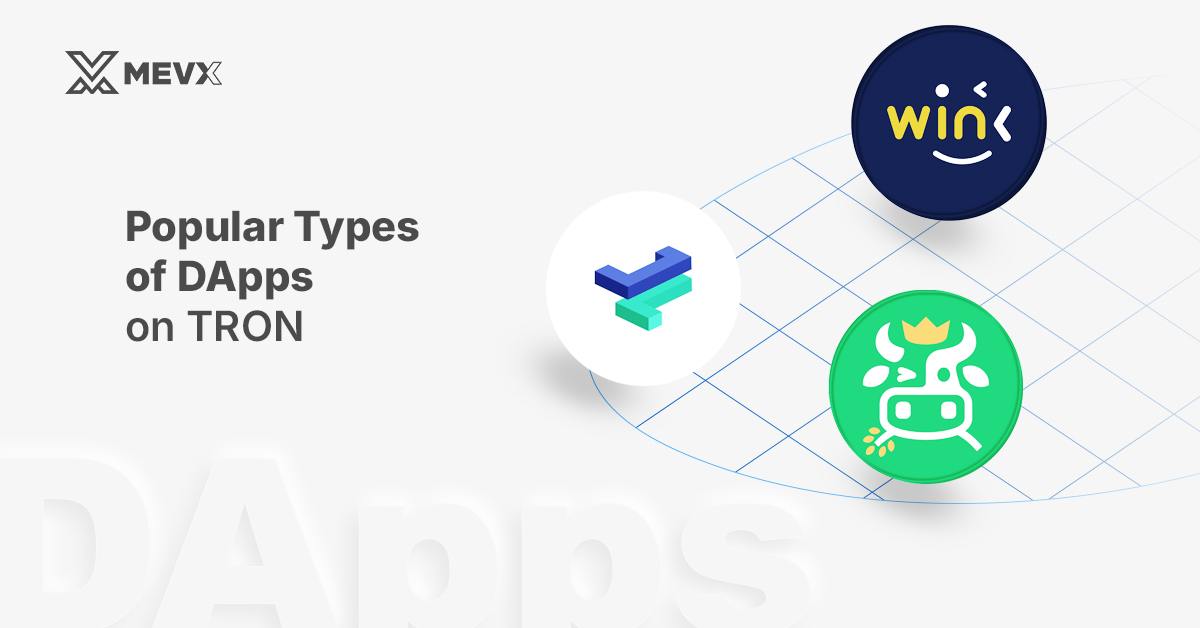Main Takeaways
- This article discusses what dApps are.
- It also covers how dApps work on the TRON blockchain.
- We also provide popular categories of dApps on TRON with specific examples.

DApps on the TRON Blockchain
What are DApps?
DApps, short for Decentralized Applications, are apps that are created based on blockchain networks. Rather than being controlled by a single company or organization like traditional apps, these dApps are governed by their users.
Why Use TRON for DApps?
TRON has some properties that make it an excellent choice for DApps:
- Fast Transactions: TRON can handle up to 2,000 transactions per second (TPS), which is much faster than many other blockchains, such as 15 TPS of Ethereum.
- Minimal Transaction Fees: Users and developers benefit from the free fees when making transactions or interacting with DApps on TRON.
- Scalability: TRON’s infrastructure can handle a large number of DApp users, allowing for smooth scaling as DApps grow in popularity.
- Developer-Friendly: TRON provides tools and resources to make it easier for developers to build DApps. It also supports users to port their dApps from Ethereum to TRON.
How Do DApps Work on TRON?
TRON dApps are powered by a combination of TRON infrastructure and smart contracts.
TRON Blockchain: The Foundation
DApps built on the TRON blockchain have clear advantages over traditional apps. While traditional apps rely on centralized servers, TRON dApps run across a distributed network of nodes. You may think this is like they have multiple small servers. The chance of all these nodes shutting down at the same time is incredibly low, ensuring dApps can run without disruption. In case you don’t remember, Facebook has experienced major outages. Such disruptions are not a concern for dApps.
DApps are implemented on the Application layer, while all the data is stored in the Storage layer of the TRON blockchain. To get more information about the infrastructure of TRON, you can visit our “How Does TRON Work?” article.
TRON Smart Contracts: The Brains of DApps
Smart contracts are implemented on the second layer of TRON infrastructure. They act like the brains of dApps. They execute the code and enforce agreements or rules when the pre-set conditions are met.
Once deployed on the TRON blockchain, they become immutable. This means no one can change or stop it, even the developers. This ensures the transparency of dApps
Resources and Fees: Bandwidth and Energy on TRON
TRON applies a unique fee model that involves Bandwidth and Energy. Instead of charging the native coins like other blockchains, users can stake TRX to receive bandwidth and energy to cover the transaction fees.
- Bandwidth: TRON gives users a certain amount of free bandwidth every day. However, users can only transfer coins within the TRC-10 standard. Staking TRX increases the bandwidth received every day.
- Energy: Interacting with dApps requires energy. Like bandwidth, users can gain energy by freezing TRX.
Types of DApps on TRON
DApps on the TRON blockchain come in different categories depending on their function and purpose.

Popular dApps on TRON
DeFi DApps:
DeFi, or Decentralized Finance, includes apps that allow users to lend, borrow, trade, or stake crypto. Some famous TRON-based finance dApps include:
- JustLend DAO: This is the first official decentralized lending platform of TRON. Users can lend their assets to earn interest or borrow tokens using collateral. The current TVL (total value locked) of JustLend DAO is $4.59B.
- JustMoney: JustMoney is a decentralized exchange (DEX) dApps that allows users to swap tokens across multiple blockchains. The platform also offers a cross-chain bridge for transferring assets between different blockchains. The TVL of JustMoney is $736,282.
Gaming DApps:
Gaming dApps on TRON let players participate in play-to-earn models, earning TRX (TRON’s native cryptocurrency) or other tokens for playing games. Some prominent examples are:
- Eggies World: A virtual pet game where players earn rewards by nurturing and evolving digital pets.
- CropBytes: A farming simulator game where players earn crypto through farming and trading in-game resources.
Gambling and Betting DApps:
TRON is home to many betting and gambling platforms that operate in a decentralized manner, offering a transparent and fair environment for users to place bets. Examples are:
- WINk: A multi-purpose gaming platform that includes betting, lottery, and casino games.
- TRONbet: A blockchain-based betting platform with a variety of gambling games available for users to play and win TRX.
Social Media DApps:
Social media DApps built on TRON allow decentralized communication and content-sharing, where users have control over their own data and can monetize their content directly.
- Peiwo: A social media app integrated with TRON that allows voice-based social interaction.
- VibraVid: A decentralized video-sharing platform where creators can monetize their content directly from their audience.
How to Use TRON DApps
Using dApps on TRON is fairly simple. You might follow these steps:
- Set up a TRON Wallet: You will need a TRON wallet to interact with the blockchain. Visit our “Setting Up a TRON Wallet” article to create one.
- Get TRX: TRX is TRON’s native cryptocurrency. You need to have TRX to pay for the transaction fees and interact with dApps. You can check out our article on how to buy TRX on exchanges like Binance or Coinbase.
- Interact with dApps: After having some TRX in your wallet, you can now interact with dApps.
Conclusion
TRON is a great choice for using and developing dApps due to its minimal fees and scalability. As TRON continues to expand its technology, its dApps ecosystem will grow.
Share on Social Media:
